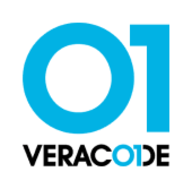

Veracode and OWASP Zap are well-regarded tools in application security testing, with distinctive strengths in static/dynamic analysis and open-source accessibility, respectively. Based on features and integration capabilities, Veracode holds an edge for enterprises seeking a comprehensive approach to security testing.
Features: Veracode supports static and dynamic scans, software composition analysis, and extensive remediation consulting. It integrates efficiently with CI/CD pipelines and supports various programming languages. OWASP Zap excels in dynamic analysis, automated scanning, and benefits from a large open-source community, providing continuous enhancements.
Room for Improvement: Veracode's interface complexity, lengthy scan times, and false-positive rates remain challenges. It could improve outdated language support and emerging tech stack integration. OWASP Zap needs enhanced reporting features and better support for modern web applications, while also reducing false positives. Documentation for both tools can be more robust.
Ease of Deployment and Customer Service: Veracode offers multiple deployment options, including cloud environments, and provides responsive but sometimes inconsistent customer support. OWASP Zap's on-premises deployment is straightforward, with strong community backing, though lacking formal support services.
Pricing and ROI: Veracode's premium pricing matches its comprehensive features and support, offering strong ROI for larger enterprises. Smaller organizations might find it costly. OWASP Zap provides a cost-effective, open-source alternative, offering critical security functionality for free, particularly suitable for budget-conscious teams.


OWASP Zap is a free and open-source web application security scanner.
The solution helps developers identify vulnerabilities in their web applications by actively scanning for common security issues.
With its user-friendly interface and powerful features, Zap is a popular choice among developers for ensuring the security of their web applications.
Veracode is a leading provider of application security solutions, offering tools to identify, mitigate, and prevent vulnerabilities across the software development lifecycle. Its cloud-based platform integrates security into DevOps workflows, helping organizations ensure that their code remains secure and compliant with industry standards.
Veracode supports multiple application security testing types, including static analysis (SAST), dynamic analysis (DAST), software composition analysis (SCA), and manual penetration testing. These tools are designed to help developers detect vulnerabilities early in development while maintaining speed in deployment. Veracode also emphasizes scalability, offering features for enterprises that manage a large number of applications across different teams. Its robust reporting and analytics capabilities allow organizations to continuously monitor their security posture and track progress toward remediation.
What are the key features of Veracode?
What benefits should users consider in Veracode reviews?
Veracode is widely adopted in industries like finance, healthcare, and government, where compliance and security are critical. It helps these organizations maintain strict security standards while enabling rapid development through its integration with Agile and DevOps methodologies.
Veracode helps businesses secure their applications efficiently, ensuring they can deliver safe and compliant software at scale.
We monitor all Static Application Security Testing (SAST) reviews to prevent fraudulent reviews and keep review quality high. We do not post reviews by company employees or direct competitors. We validate each review for authenticity via cross-reference with LinkedIn, and personal follow-up with the reviewer when necessary.